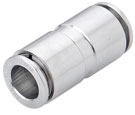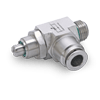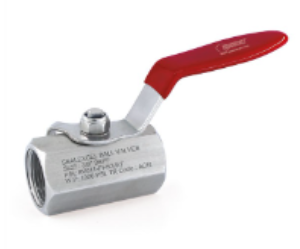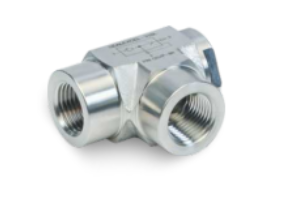
Pneumatic Fittings – Different Varieties Used according To Function and Connection Types
April 17, 2015Flow control valves are special fittings designed for use in sophisticated hydraulic and pneumatic systems. These valves include simple tool orifices, along with a sophisticated set of closed loop set of electrohydraulic valves that are expertly designed to adjust to the different variations in system temperature and pressure.
Flow Control Valves
The flow control valve fittings are used to reduce the actual flow rate in a definite section of a pneumatic circuit. This serves to decrease the actuator speed of the system. While a needle valve controls the flow in two directions, a flow control valve fitting is used to direct the system flow in only one direction. This way, free flow of the gas or liquid is allowed in the opposite direction.
The threaded stem of the valve ensures gradual and easy adjustment of the quantity of controlled flow that is allowed to pass through a valve. There are two types of flow control valves which are used for placements in pneumatic circuits. The selection and installation of these two types of flow control valves has a great impact on the actual functions of an actuator.
- Meter Out Valve – It is a common type of control valve which is used to control the exhaust flow that is released from the actuator.
- Meter In Valve – Also called the Reverse flow control valve, it is used to restrict the flow to the actuator itself.
One of the most important factors to consider while choosing a flow control valve for a specific system application, are the flow control requirements. The actual speed of the actuator is completely dependent on the rate of air filled in the input, and the air flow calculated at the exhausted output.
Use In Pneumatic Systems
What a flow control valve accomplishes in a pneumatic system; is the directional control of the flow. It is responsible to direct the energy transfer to the right place within the system, at the proper time. A valve which controls and directs flow ensures that the stream of high energy input is directed to the actuator inlet, which in turn, provides a suitable path for the low energy system oil.
The system has a critical need for the flow stream to reach the right place at the suitable time. The actual control of the flow and pressure, to direct the energy transfer within the system, is of secondary importance. The secondary function of the directional valves and fittings, ensure the proper timing of the cyclic events.
As valves offer a number of ports and entryways, they are used in pneumatic and hydraulic systems, to control, direct, allow and inhibit the flow of air, which is pressurized within the system. The resultant air pressure powers up and energizes the system accordingly.
The numerous ports of the valves help create specific required flow patterns that are used to run the systems efficiently and ensure fast actuator speed to power up the device. for more information please visit us at sealexcel.com




